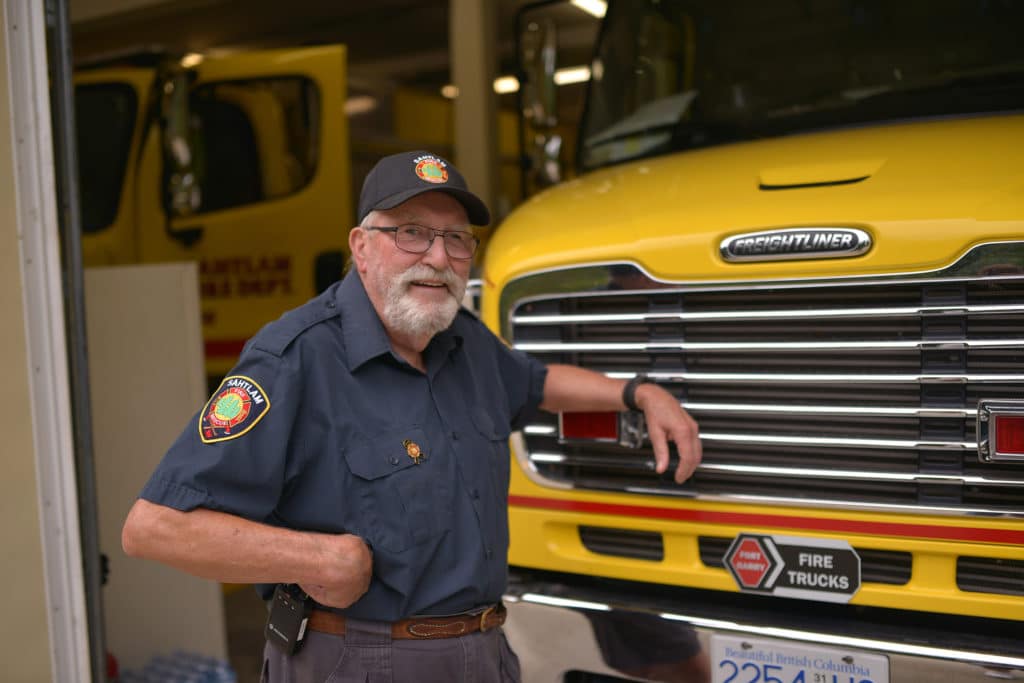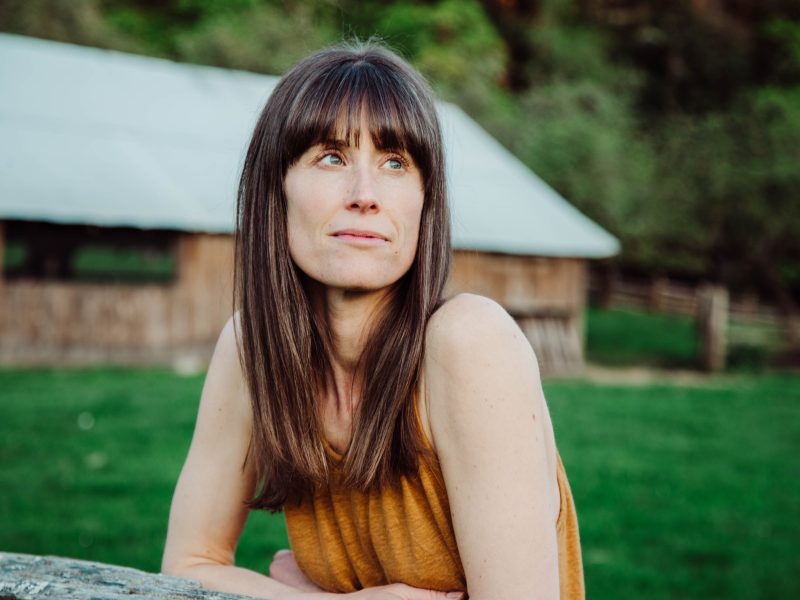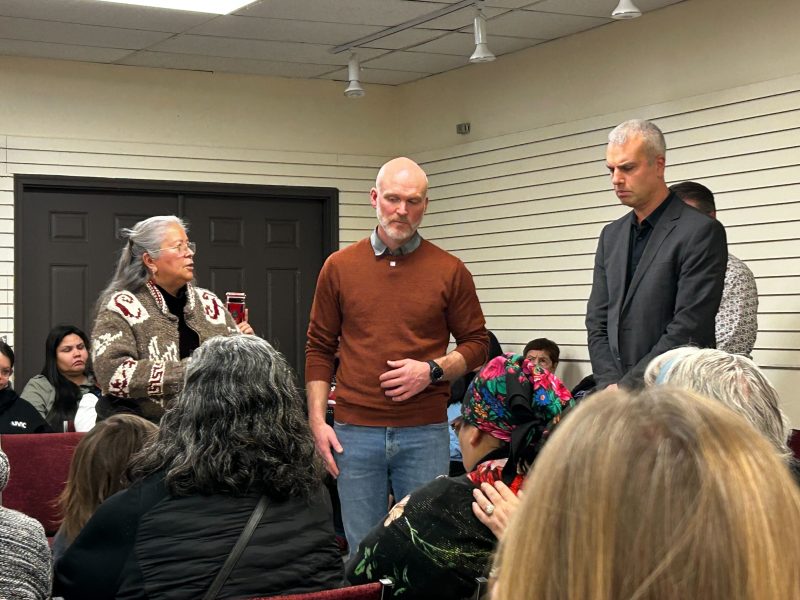
For 38 years and counting, Mike Lees of the Sahtlam Fire Department has been paying it forward to the community that helped him out in his time of need.
The 77-year-old Lees became a volunteer firefighter in the wake of a 1981 fire that destroyed his home on Arla Court. Fortunately, no one was hurt in the fire, but he says it was particularly bad timing because his home insurance had run out a month earlier and he couldn’t afford a new policy.
However, he says that the Sahtlam community stepped up and supported him and his family with accommodations while they built a house elsewhere on their lot. As soon as he was settled into the new house, Lees started training to become a firefighter.
“It was my way of giving back by joining the fire department,” he explains. “I felt an obligation because this community was good to me after our house fire and they all chipped in to help.
A fiery introduction
According to Lees, house fires and brush fires were more common back when he started with the fire department. Still, there were only about three or four house fires in a typical year. In a terrible coincidence, during his first week as a firefighter he was called to two house fires in one night.
“It was hectic, people trying to teach you what to do at the same time as you’re trying to be a firefighter,” he recalls.
Lees went on to become deputy fire chief and then fire chief, serving in the latter capacity from 1992 to 2011. In addition to house fires, he fought many brush fires. The local fire department would usually get to the scene prior to the arrival of BC Wildfire Service crews, he says.
Related story: As wildfires burn, here’s how you can get prepared and stay safe
“Every incident that you attend leaves its mark on you,” Lees says. One of the biggest fires he battled during his tenure as fire chief was when the old Paldi school burned down in 1997.
In one tragic incident, a 19-year-old firefighter, Dustin Engel, who had been with the department for about six months, fatally rolled his Jeep while responding to a call in June, 2004. “It happened on my watch,” Lees recalls.
‘It’s not just putting wet stuff on the red stuff’
Earlier this month, the Sahtlam Fire Department had its first full practice since before the COVID-19 pandemic. Lees says the firefighters had been practicing throughout in smaller groups.
Sahtlam’s firefighters are on call day and night, every day of the year.
“Just getting the call, it pumps up the adrenaline right away. As soon as the pager goes off you’re ready to go,” Lees says.
Volunteer fire departments respond not only to fires, but to car crashes, medical emergencies and other local incidents that require a quick response.
It used to be that firefighters would respond directly to the location of the call, but the way it works now is that while the duty officer or fire chief responds directly, everyone else heads to the fire hall, Lees explains. He adds that there is a mutual aid agreement with all the municipalities and the CVRD, whereby local fire departments will ask for assistance when needed.
These days, Lees says that his primary role is as equipment operator, which includes driving a fire truck. He says that the station’s fire trucks can carry 4,300 gallons of water. If needed, the trucks will use a local water source to fill up or return to the station, where there is a 12,000-gallon water tank. “So, it’s hauling water and fighting fire all at the same time,” he says.
Lees says that even when he’s driving the truck, he helps out with the setup of the incident command system that gets established at every active fire. He explains that everyone is assigned a job to do, and that there is a lot of “background stuff” going on, including safety officers, officers running teams as well as the incident commander.
“It’s not just putting wet stuff on the red stuff,” he says.
Fire department needs new members
Lees has no immediate plans to retire. He will likely stay on at least until the department is able to recruit new members. He says that while the fire department prefers to have 30 volunteer firefighters, they are down to 22, with only 16 who are very active. He adds that it’s a “geriatric crew” during weekdays, when there are usually five members available, with the youngest about 55 years old.
“We’re short firefighters; people just don’t want to volunteer anymore,” Lees says. “We can’t afford to lose anybody. So it’s all hands on deck when the alarm goes off.”
Lees says that the ideal demographic for new firefighters is local residents in the 35-to-60 age range: “people that have property in the area, people that have got their feet planted in the ground and are willing to donate their time to assist the volunteer fire department.” He says that a renewed spirit of community is needed.
“I hope we can educate the people in the area that we live that … if you’re going to be part of this community, that it’s accepted you should be a full part of the community. And volunteering in the community is an important thing.”
There are 18 volunteer fire departments in the Cowichan region. Contact information is available on the Cowichan Valley Regional District website. [end]



